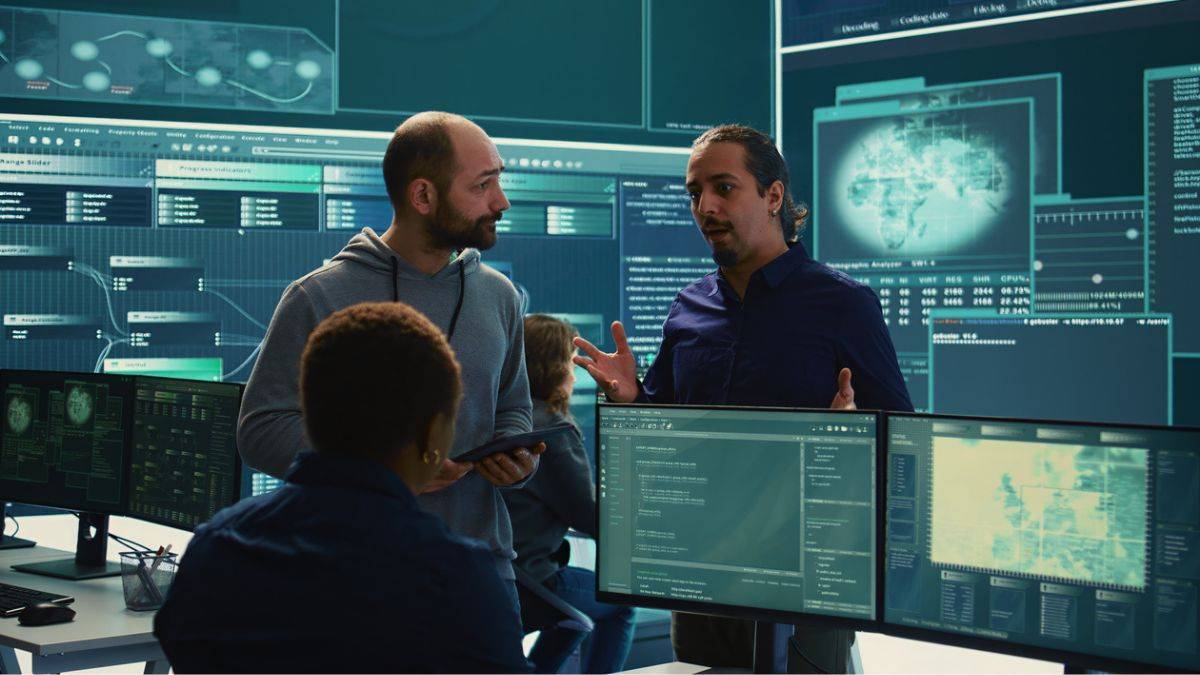EDR vs XDR vs MDR: how do they differ?
As businesses strengthen their security posture, three detection and response solutions often come into focus: EDR vs XDR vs MDR.

As businesses strengthen their security posture, three detection and response solutions often come into focus: EDR vs XDR vs MDR.
These technologies are crucial in combating increasingly sophisticated cyber threats, but what do they mean, and how can they benefit your organisation?
Each offers unique capabilities for detecting and responding to security incidents, with differences in scope, management and approach. Whether you’re focused on endpoint security, need broader coverage across your infrastructure, or prefer a fully managed service, making the right solution is essential for your business’ security.
So what do EDR, MDR & XDR mean?
Each solution offers a unique approach to security, and while understanding the difference between EDR, MDR, and XDR can be confusing, it’s an essential part of deciding which solution is right for your business.
Let’s start with the definitions!
What is EDR?
EDR (Endpoint Detection and Response) is a security solution that focuses on detecting, investigating and responding to threats specifically at the endpoint level, such as workstations, laptops and mobile devices. EDR tools continuously monitor and collect data from endpoints, enabling real-time detection and remediation of attacks targeting these devices.
What is XDR?
XDR (Extended Detection and Response) expands beyond endpoints, integrating data from multiple security layers such as networks, email and cloud environments. This gives security teams a more comprehensive view of potential threats across the entire IT ecosystem, not just individual devices.
What is MDR?
MDR (Managed Detection and Response) is a managed security service that provides 24/7 threat monitoring, detection and response through a team of security experts. It’s a service that typically uses EDR or XDR technologies but adds expert human oversight, making it ideal for businesses without a dedicated in-house security team.
How do EDR, MDR & XDR compare?
EDR vs XDR
When comparing EDR vs XDR, the most significant difference lies in the scope of coverage:
- EDR focuses on detecting and responding to threats at the endpoint level.
- XDR provides a more comprehensive approach, integrating multiple data sources (not just endpoints) for better threat detection across your entire infrastructure.
In essence, XDR vs EDR offers a broader, more integrated defence mechanism, suitable for organisations looking to cover a wider range of security risks.
EDR vs MDR
The difference between MDR vs EDR lies in the fact that EDR is a technology-driven solution, whereas MDR is a fully managed service. MDR typically includes an EDR platform but adds continuous monitoring and response by a team of external security experts, reducing the internal burden on your organisation. This makes MDR especially valuable for businesses that lack the expertise to manage EDR tools on their own.
MDR vs XDR
The key difference between MDR and XDR is that MDR is a service offering that relies on human oversight and expertise, while XDR is a technological solution that aggregates data from multiple sources for automated, advanced threat detection. While both provide excellent detection and response capabilities, MDR vs XDR should be considered based on whether you need hands-on support from security experts (MDR) or a more integrated, multi-layered detection system (XDR).
So, which solution is right for your business?
Deciding between EDR, MDR, and XDR depends on your organisation’s specific needs, size and security challenges. Here are some points to consider:
- EDR is ideal for organisations that want to focus on endpoint security but have the in-house resources to manage it.
- MDR is perfect for organisations that need a fully managed service. With MDR, security experts handle everything from threat detection to incident response, using either EDR or XDR tools.
- XDR is suited for larger organisations with complex infrastructures that need a broader security solution covering multiple layers, such as network, email and cloud services.
Finding the right balance
For many businesses, it’s not about choosing one solution but combining these technologies to create a stronger, more resilient security architecture. For example, Ekco offers managed XDR services, which combine the broad detection capabilities of XDR with the expert oversight and management provided by MDR.
The choice between EDR, MDR, and XDR will depend on various factors, such as your organisation’s security resources, infrastructure complexity and regulatory requirements. Companies with smaller IT teams may find MDR invaluable, while those with larger, more complex environments may benefit more from XDR’s comprehensive threat detection capabilities.
Strengthen your cyber security with the right solution
When comparing endpoint detection and response vs antivirus, the primary difference lies in the level of protection and the type of threats each solution targets.
- EDR offers focused, endpoint-specific protection, perfect for smaller organisations with fewer resources or dedicated IT teams.
- MDR provides a complete, managed service that can alleviate the burden on internal teams, especially for SMEs or organisations lacking specialised security personnel.
- XDR delivers an advanced, comprehensive view of your organisation’s security landscape, giving better insight into complex and multi-vector threats.
It’s important to evaluate your business needs and resources before making a decision. For many organisations, combining these approaches—utilising EDR MDR XDR technologies in unison—can provide the most robust protection. The right combination of tools and services will help your business detect and respond to threats quickly, ensuring minimal disruption and reducing the risk of security incidents.
If you’re unsure about the best solution, partnering with a provider like Ekco can provide tailored support to ensure your cyber security needs are met effectively. They offer comprehensive services, from managed detection to multi-layered threat protection, helping organisations stay secure in an ever-changing threat landscape.

Question?
Our specialists have the answer



